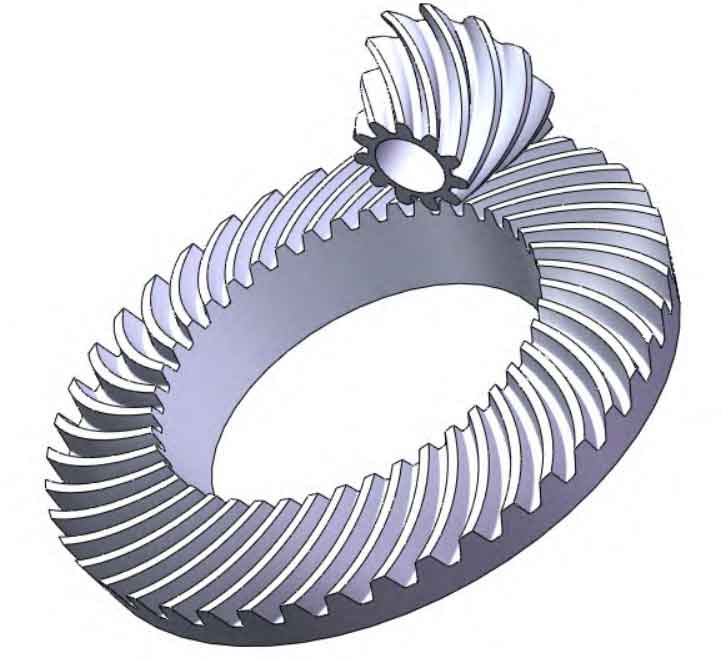The roughness result determines the quality of spiral bevel gears. For the sawtooth cutting mode, the roughness value of Ra and Rz is much lower than that of the sawtooth cutting mode, about 50% lower. Comparing the machining of 3+2 axis and 5 continuous axes, it is concluded that the surface roughness of 5 continuous axes is better. On the contrary, the surface roughness of continuous 5-axis machining with sawtooth cutting mode is the worst. Compared with programmed step, when the programmed step decreases and the tool works in the milling process, the tool tends to return to the processed path and increase the roughness value. This is called “track effect”, which is the result of tool deflection. This can explain why the surface roughness value of the sawtooth cutting path is higher.

The surface roughness prediction model is used to analyze the machining behavior of 5-axis and 3+2-axis machining strategies. In the case of 3+2 axis machining, the roughness values obtained on the side of the concave gear and the convex gear are similar. On the contrary, in the case of machining five continuous shafts, the surface roughness value obtained is higher on the side of the convex gear. Because of the established roughness model, this problem can be corrected by changing the attack angle of the tool axis of the machined surface, so as to improve the surface roughness. Indirectly, the model also detected the so-called “railway effect”, that is, the roughness value obtained almost doubled.
The spiral bevel gear model also determines the influence of cutting parameters such as tool feed (mm/rev) and tool edge number. Therefore, it can be concluded that for a higher number of tool edges (keep the tool feed value), the roughness result is significantly lower. Obviously, there is a direct relationship between the program input value and the obtained roughness result.
The results show that a small increase in feed rate has a significant impact on the final surface quality. By analyzing the roughness value in the tool feed direction and comparing it with the roughness value perpendicular to the feed direction, it can be clearly seen that the same feed value set in the program always produces higher roughness due to different steps, which makes it a more strict parameter, which is why it is measured at each different processing side.
